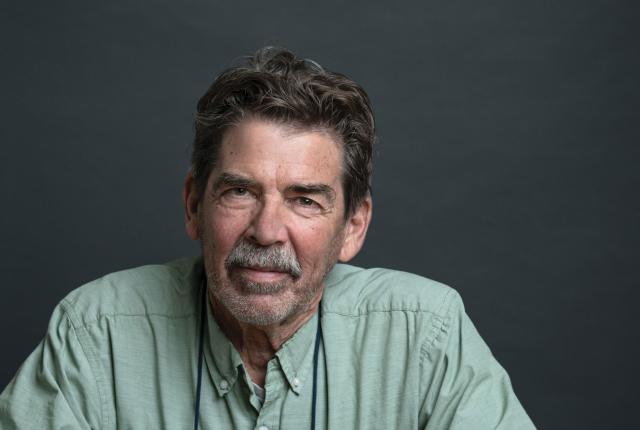Above: Tony O'Brien. Photograph by Brandon Soder.
WHILE BARTENDING AT EL NIDO, in Santa Fe, Tony O’Brien got his first photography job, at the Santa Fe New Mexican, and began building a résumé that included work as an overseas correspondent for publications such as Life, Time, and The New York Times Magazine. O’Brien covered an expedition to Mount Everest and spent years documenting rebels during the Soviet–Afghan War. That led to his first book, Afghan Dreams, for children. After a six-week imprisonment in Afghanistan, he sought solace at the Monastery of Christ in the Desert, near Abiquiú, and covered the experience in the book Light in the Desert. He has led photography programs at the former College of Santa Fe and its successor, Santa Fe University of Art and Design, and still teaches short courses through the Santa Fe Workshops.
My first camera was a Pentax. I think my parents got it for me. I really didn’t know anything about making photographs, but I think I wrote to National Geographic, offering to shoot for them. I might be mistaken. I hope I am.
I’m from Washington, D.C., but had finished up my degree at the College of Santa Fe and thought maybe, instead of being a little fish in a large pond, I might be a little bigger fish—a guppy—in a small pond. One night, a friend who worked at the New Mexican said, “The photographer just quit. The editor wants to see you.” I was petrified. I didn’t know anything, and there was no way out.
I would just watch people. I’d watch how they used a machine, and then I’d do it.
I traveled across Europe to learn how to shoot color. And then I got on with Picture Group, one of the hottest agencies going for a while.
They sent me to Pakistan. It was kind of like making your bones. The day after I got there in 2007, Benazir Bhutto, the former prime minister, was released from house arrest. I got the picture and thought the story was over. But this correspondent says, “I’m going to Peshawar, near the Afghan border. Why don’t you come?” The mujahideen and other rebel groups, you could get in with them and they would take you into Kabul, where the fighting was. I’d heard the arrangements might take a month, so I figured, I’ll go, talk to them, probably won’t get in, and that’s my ticket home. The next morning, I get a call: “Can you be ready tomorrow at six in the morning? You’re going in.”
One day, my wife was dropping me off at the airport for another trip, and our daughter was three months old. For years, I thought of getting to the airport as the moment when things began—things are out there. And this time I thought, Wait a minute, my friend. Your life isn’t out there. It’s back here.
Over the course of a year, I’d go one or two weeks a month to Christ in the Desert. I realized I couldn’t do the book as a guest. The abbot said, “You can be part of the community.” So whenever I was there, I just lived the monk’s life.
It changed my photography. As a photojournalist, you’re always chasing. Here it was like: Slow down, let the images come to you, keep it simple.
One day, I was walking to chapel in the snow. Another hermit was coming toward me, with his long beard and hood. We stood there talking, and I realized what a tremendous photo this would make. I went to pick up the camera and something in me said, Don’t do it. The minute you pick up that camera, the connection is gone. I didn’t do it.
These days, I just shoot for myself. I use a Panasonic Lumix because I got tired of carrying big equipment. I shoot things that interest me. I also make photographs on my phone. I’ve noticed that I have much more fun with that, just quick snaps. With my career, whenever I lift up the camera, I really go into photographer mode.
My good fortune is that I could live in a time when I caught the last wave of still photography but also get to stick my toe in this new age of photography.
I thought at one point I was going to change the world. It was a very humbling day when I realized, Not so much. But you are making someone aware. What they do with that is up to them.

SEE FOR YOURSELF
Tony O’Brien teaches “Seeing Light,” April 5–10 at the Santa Fe Workshops.


